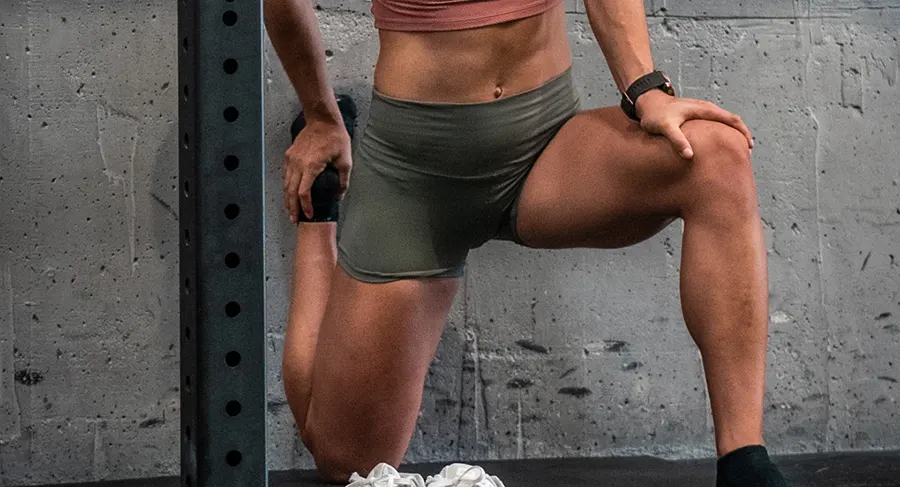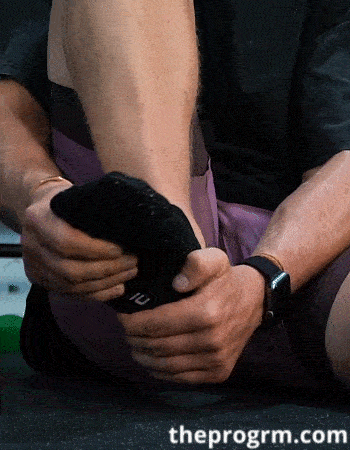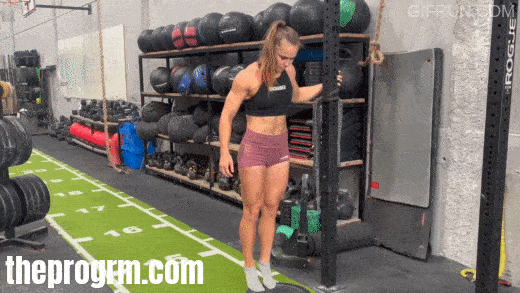Improving Ankle Mobility
|

Ankle mobility is a major contributor to the efficacy of the squat position, one of the nine foundational movements of CrossFit. In our day-to-day lives, we squat unconsciously, but when we load the position (like while training), it’s crucial that we execute with special care to form.
Why is Ankle Mobility important?
Squatting is a function necessary to many parts of daily life. When you sit, stand, or pick something up from the ground, it’s likely that you’re doing some version of a squat. Having an increased range of motion allows you to get into position quicker and while handling more load. If we have restricted ankle mobility, we might have a harder time quickly or safely performing exercises which is a huge handicap in a sport like CrossFit.
Exercises negatively influenced by tight ankles include:
- Squats (front, back, overhead, pistols)
- Olympic Weightlifting (Snatch & Clean)
- Box jump
- Wallball
A lot of the time we compensate for poor ankle positioning by reducing the exercises’ range of motion. Sometimes we do this unconsciously (who hasn’t seen a “power wall ball” before?), or by using something like weightlifting shoes that elevate the heel. While some may see it as “cheating”, weightlifting shoes are a tool that help to ensure that your body arrives in the correct position. This is particularly important for moving maximal and submaximal loads.
While lifting in a pair of olys is a straightforward solution for those who train the Olympic lifts or squats exclusively, it’s not always the best solution for CrossFit athletes. Sure, they come in clutch in the strength part, but when heavy lifts come up in a WOD with running, or double unders, things get a bit complicated. That’s why it’s important to have minimal restrictions whether you’re wearing cross training shoes or going barefoot.
How can I tell if my ankle mobility is bad?
The ankle is a peculiar joint in that it’s one of few in which dorsiflexion occurs. Dorsiflexion is what allows your foot to flex and extend (move upwards and downwards) on both sides of the joint. If you’re not sure that your ankles restrict your movement, you can perform the Wall Test:
Wall test
- Start in a half-kneeling position with your big toe 5 inches from the wall and your foot flat on the ground.
- Try to touch your knee to the wall without lifting your heel or twisting your hips. Your knees should track over your toes.
If you fail to get your knee to the wall, or feel pain or tension, you should consider working on your ankle mobility to mitigate the restriction. See below for some suggestions.

What can I do to improve my ankle mobility?
Here are three drills that will help you to improve your mobility. Include these exercises in your warmup once you start to get your body temperature up. Keep in mind that these aren’t all necessarily permanent solutions. Seeing long-term improvements in mobility requires consistent work, using a variety of distractions, massage, eccentric loading, and most importantly, spending time in the position.
Foam Rolling
Myofascial release is a fan-favorite when it comes to warming up. Foam rollers, lacrosse balls, whatever your weapon of choice, it’s not uncommon to see CrossFitters spend upwards of 10 minutes foam-rolling every nook and cranny before training. This is because loosening tight muscles helps us to feel more limber while we train. Likewise, we can use this technique to widen our range of motion in commonly restricted areas like the shoulders, hips, and calves.
Don’t overdo it though; being able to engage muscles and maintain support and stiffness is crucial when weight training.
- To improve your ankle mobility using a foam roller, sit on the ground with your legs extended and the foam roller placed under your calf
- Spend 20-40 seconds rolling out the back and sides of the ankle, staying close to the base of the foot. Include your calves, quads, and hamstrings to see extra benefits.
- Use your upper body to adjust the pressure applied on the roller. You should feel the massage, but it shouldn’t be painful.
Eccentric Calf Raise
This exercise is excellent because it uses eccentric loading in the soleus, a muscle that plays a crucial role in dorsiflexion but that often goes overlooked.

- Place a 2-inch plate on the ground. Stand on it with the back half of your feet off the plate
- Stand on the balls of your feet and then slowly lower your heels toward the ground. Complete 6-10 repetitions.
- You can hold on to a wall or rig for balance if necessary. If you can’t touch your heel to the floor from a 2-inch plate, use a thinner one and work your way up.
Band Distraction
This drill mobilizes and stabilizes the joint to prepare it for physical activity. It’s one of the most effective ways to see improvements in the ankles’ range of motion but is also useful for athletes who have sufficient ankle mobility. This drill works best when performed without shoes.

- Tie a medium-thick band to the rig or sturdy column just above the ground.
- Place the band around the base of the ankle (your upper foot). Keep your foot flat on an elevated surface (like a step or stack of plates). The band will pull you backwards and should be taut.
- Drive your shin and knee forward (just like in the wall test) without lifting your heel or letting your knees fall inward. Hold the position for 10-15 seconds before easing back to reduce the tension on the band. Complete 5-8 reps on each side.
You can also check out some additional tips in our YouTube tutorial below:
Don’t forget that spending more time in a deep squat is probably the best way to improve the position. If you can’t hold a deep squat yet, scale the exercise by using counterbalances, isometric squat sits, and inclining your heels in the squat position, and from there work your way up by increasing the difficulty.
It also helps to integrate different types of movement like ATG squats, Cossack squats, and lunges. Performing these exercises while barefoot can also help to improve the strength and stability of your ankles.
Conclusion
CrossFit workouts are so well-rounded that poor mobility can really become a crutch. Considering that the ankle joint is prevalent in so many exercises used in the sport, having good mobility can give you the upper hand when it comes to lifting heavy, completing more reps, and performing in the safest positions possible. Even if you suffer with poor ankle mobility, by implementing mobilizations and stretches on a regular basis, you can make noticeable improvements and up your game.
Want to improve your overall mobility game? Check out the GOWOD mobility app. Master the perfect warm up, and cool down routine for your workout.







